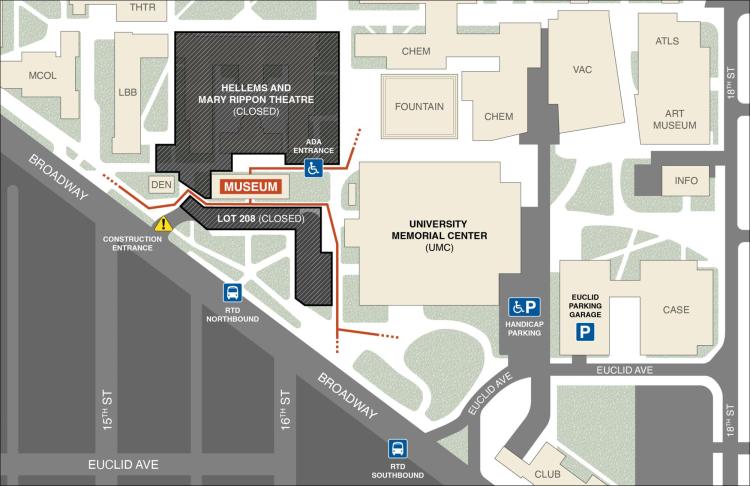The CU Museum is closed. We will be reopening soon.
During this time, collection visits will be available by appointment and other special access requests will be considered on a case-by-case basis.
Please email cumuseum@colorado.edu for more information.
Visit
The University of Colorado Museum of Natural History is located in the Henderson Building on the University of Colorado Boulder campus. Access to the museum will be impacted by the Hellems Renovation Project, effective through January 2026. Please see below for a map and additional information on access and parking during constructon.

Parking
On-campus parking
Visitor parking is conveniently located in the Euclid Parking Garage. Open 24/7, the Euclid Parking Garage is located between Broadway and 18th Street (east of the UMC) and is a "pay-by-plate" paystation lot. You will need to have your license plate number to pay at any of the paystations located at each pedestrian exit. (Tip: Take a photo of your vehicle's license plate on your cellphone and you'll always have it available for pay-by-plate parking payment). Paystations accept payment by credit card, coin and the Parkmobile app.
Off-campus parking
Visitors may park in the residential area west of Broadway. Parking in these areas is either two-hour or all-day free parking. Be sure to check posted signs for details. There are also 2- and 4-hour metered spaces on University Hill, west of Broadway and north of the Museum. There are two pedestrian underpasses visitors can use to proceed onto campus.
Public Transportation
The Museum is conveniently located next to the Broadway and Euclid RTD bus stop (#12433). Visit the RTD trip planner for bus lines and schedules.
Accessibility
The closest public handicap parking is located on the east side of the University Memorial Center (UMC) on Euclid Avenue. These parking spaces are metered. A new ADA accessible ramp has been installed on the east side of Henderson Museum. Within the museum, an elevator is available for handicapped visitors to travel between floors.
Prepare for Your Visit
Click the button below to view or print a visual and written museum guide. It describes various social interactions, situations, behaviors, skills, or concepts you'll likely encounter durring your visit. This is a Social Story, and it can be helpful for families with children with autism and sensory processing differences, first-time visitors, and others who prefer to prepare for new environments and situations.
This Social Story was created by Summer King as part of the CU Museum of Natural History's Museum and Field Studies Graduate Program in 2023. Summer is a neurodivergent researcher studying accessibility in museums.

